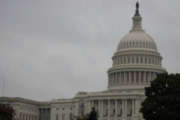WASHINGTON – It’s a hot topic for parents and high school seniors every year: The Forbes’ ranking of America’s Top Colleges. But just what does “top” mean?
This year’s list ranks Stanford University in California No. 1; University of Virginia in Charlottsville No. 29; and Johns Hopkins in Baltimore No. 46. Forbes released its annual list this week.
But Richard Vedder, director of the Center for College Affordability, says what’s the behind the rankings may be more revealing.
The rankings are based on varying factors including each school’s cost, academics, student debt, graduation rate, employment rates and salaries of new graduates. But high scores can be misleading because the ranks blend a variety of performance factors.
Take the University of Virginia, for example.
“It’s an extremely fine school, and a great bargain and all of those things, but there are a lot of people who simply can’t go there,” Vedder says.
The combination of those factors helped push the University of Maryland at College Park, ranked No. 73, ahead of George Washington University, No. 77, which is known as a more academically challenging school, says Vedder.
Cost and how many graduates can find jobs are key measurements that help a school like the University of Maryland. More and more students are applying to take advantage of what College Park can offer.
That also increases the competition to earn admission to the University of Maryland.
“Very few people can get into Stanford or Harvard, or Yale, or University of Maryland or George Washington,” Vedder says.
Vedder says students and parents need to factor in all the criteria when choosing a school, including the student’s potential major and the school’s location.
There are 650 colleges and universities on the list. The full list is available on Forbes’ website.
Follow @WTOP on Twitter.







